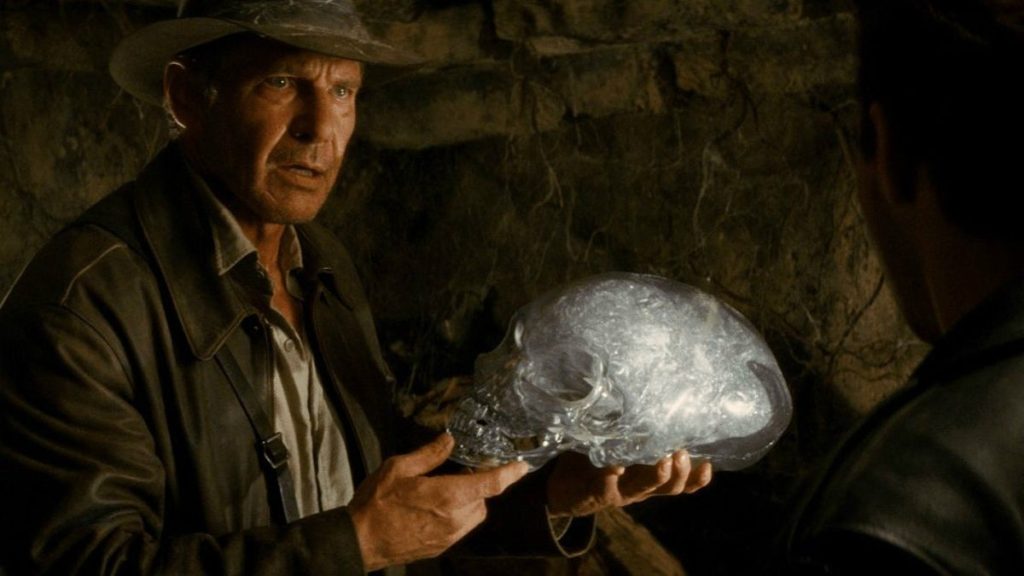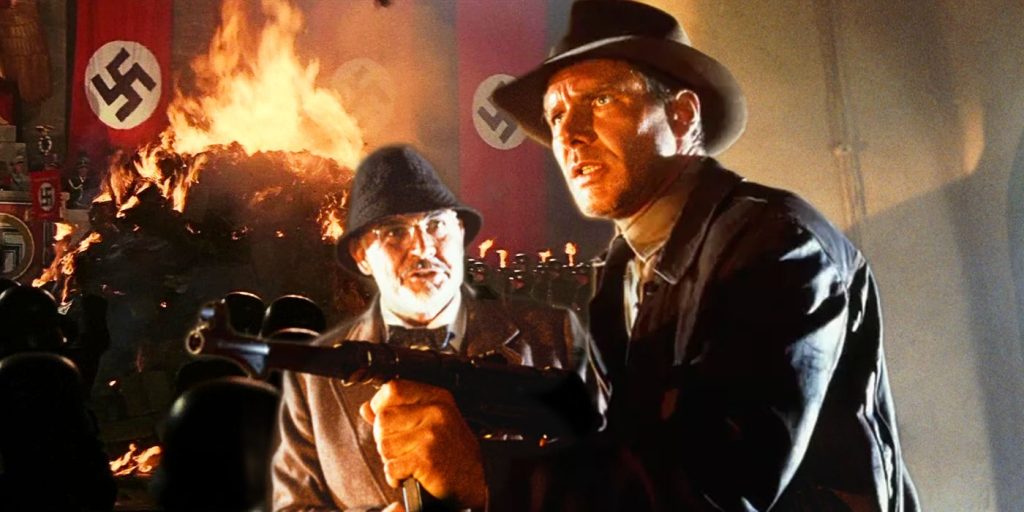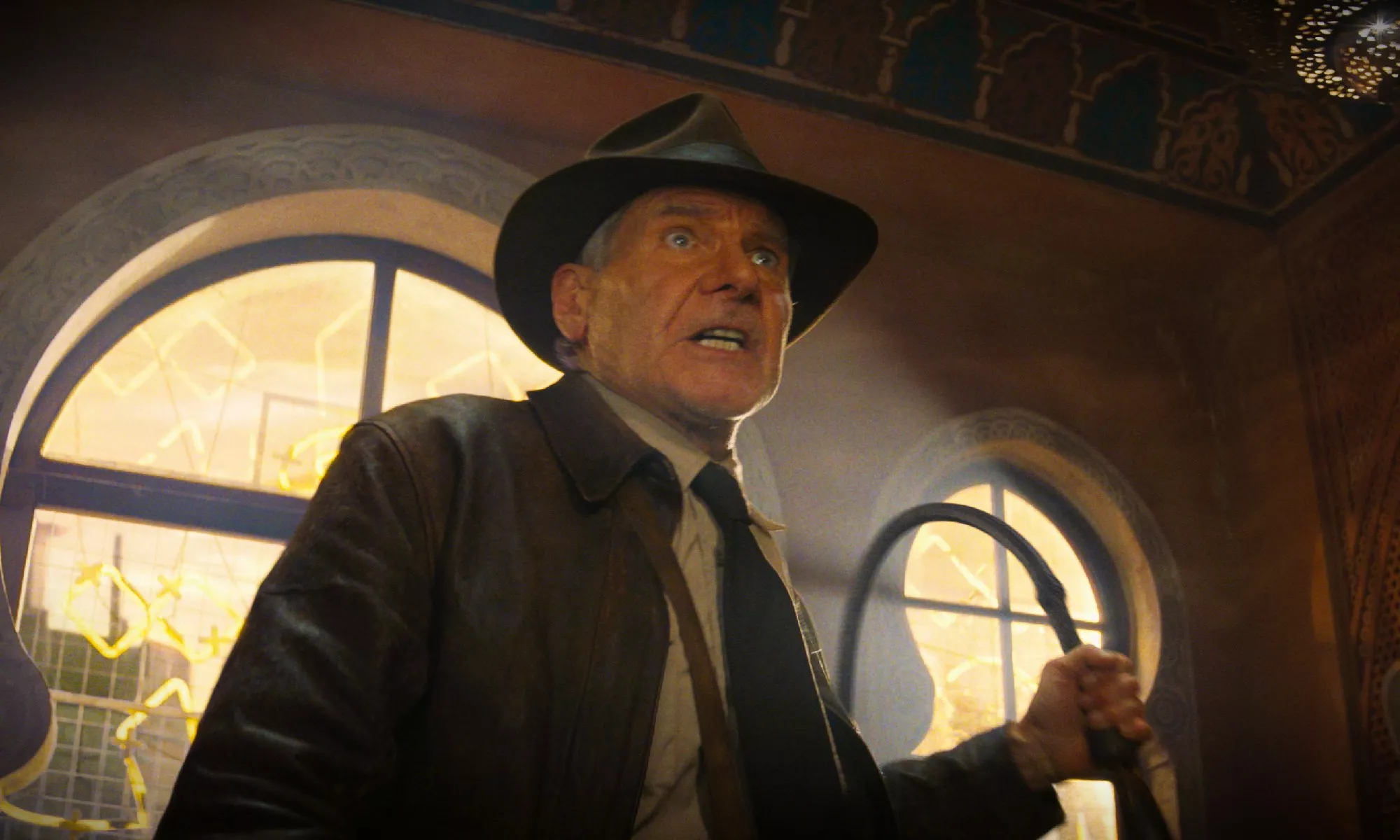Despite occasional nods to its former glories, it is now time for the Indiana Jones franchise to bid farewell.
“In 1989, Cher crooned the iconic lyrics, ‘If I could turn back time…,’ coincidentally marking the release of the Indiana Jones franchise’s last great installment, Indiana Jones and the Last Crusade. Fast forward to the present, and the concept of rewinding time, both literally and metaphorically, occupies the minds of those involved in Indy’s fifth and purportedly final adventure, Indiana Jones and the Dial of Destiny. In this installment, an aging Dr. Jones (played, of course, by Harrison Ford) confronts his mortality, regrets, and life’s achievements.
It seems fitting, then, that the MacGuffin drawing Indy out of his impending retirement for one last globetrotting escapade is a device attributed to the ancient Greek mathematician and physicist, Archimedes. This enigmatic device, known as the Dial of Destiny, holds the potential to alter history’s course. Should our hero acquire the device—naturally, divided into three parts—will he be tempted to tamper with its powers?
While this premise holds intriguing possibilities, it is regrettably underexplored within Indy 5 (as we’ll refer to it). For Indy and his dwindling allies, including Sallah (John Rhys-Davies, in a brief nod to the audience) and Helena “Wombat” Shaw (Phoebe Waller-Bridge), a recently introduced goddaughter, the mission is simply to secure the Dial of Destiny before a surviving Nazi named Voller (a lackluster Mads Mikkelsen) can.
Meanwhile, the audience’s mission becomes a struggle to remain engaged. It pains us to declare that Indy 5 is a tedious bore—a bloated, sluggishly paced slog that attempts to recapture the franchise’s former glory, akin to someone desperately blowing on dying embers to reignite a fire. The script and characters go through the motions, lacking meaningful development. Unfortunately, the entire 140-minute film is burdened by a palpable lack of energy that neither the cast nor director James Mangold (taking the reins from Steven Spielberg) can replicate.
We had the opportunity to view Indy 5 at the Dolby Theater in Hollywood, where the film was showcased in Dolby Vision with Dolby Atmos sound. Notably, the sound design stands out as one of the film’s strengths—a technical achievement at its finest. With Atmos technology, the immersive and expansive sound experience engulfs the audience, allowing John Williams’ exceptional score to resound with unprecedented clarity and scope within the theater.
The Dolby Vision projection equally impresses with its sharp and vivid imagery. If only every theater could offer such pristine quality. However, this clarity also underscores the film’s heavy reliance on computer-generated effects, surpassing even the level seen in 2008’s Indiana Jones and the Kingdom of the Crystal Skull.

The opening sequence, lasting an overextended 20 minutes, is set in 1944. Here, we find Indy and his Marcus Brody counterpart, Basil Shaw (portrayed by Toby Jones), pursuing the Lance of Longinus—a spear associated with the crucifixion of Christ—which is currently in the possession of the Nazis, among other stolen artifacts. Overseeing the operation is Voller, who has stumbled upon the significantly more potent Dial of Destiny and aims to deliver it to his superiors. Naturally, Indy becomes an obstacle, resulting in an action-packed opening sequence culminating in a train-top confrontation, ultimately hurtling off a bombed bridge amidst the Allies’ assault.”
This is the contentious sequence in which Ford undergoes de-aging to resemble his early 1980s self, when he first portrayed Indy. Initially, the transformation appears quite impressive, but the flaws gradually become apparent over the next 20 minutes. Unfortunately, the rest of the scene appears overly polished and excessively reliant on CGI, with the rushing landscape serving as the backdrop for Indy and Voller’s battle atop the speeding train—a visual that uncomfortably reveals its digital origins in the Volume.
Fast forward to 1969, a time when counterculture is thriving, and an aged and disillusioned Indy prepares to retire as a professor of archaeology at New York City’s Hunter College. We discover that Marion Ravenwood (played by Karen Allen), Indy’s love interest whom he married in Indy 4, is now separated from him due to the strain of past tragedies. Rarely has an emotional arc from a previous film been so thoroughly reversed, akin to the swift dispatching of Newt and Corporal Hicks at the beginning of Alien 3, negating Ripley’s hard-fought efforts to save them in Aliens—and all of this occurring offscreen, no less.
Enter Helena, who emerges to retrieve the portion of the Dial that Indy and her late father had managed to safeguard, intending to sell it to the highest bidder in Tangiers. Indy pursues her to the location, with Voller, now working for the U.S. government, and his cohorts hot on their heels. Indy catches up with Helena and persuades her (or so he believes) that the Dial should not be sold. Instead, they embark on a mission to locate the remaining two pieces before Voller can acquire them with his nefarious Nazi intentions.

During the journey, Indy 5 settles into a rhythm that can be generously described as stop-and-start, but more accurately feels like a lethargy. The narrative halts for bursts of exposition, often delivered by Helena or a new character, only to abruptly transition into the next chase or set piece. Everything feels perfunctory, lacking a sense of organic development from the story or characters. These elements are present merely because it is an Indiana Jones film, and we are expected to witness them. Furthermore, for every introduction of a picturesque and authentic location, such as the desert or Sicily, there is an evidently fake representation of New York City and an extensively digitized pursuit through a subway tunnel.
Introducing new characters to the mix, we have Teddy Kumar (played by Ethann Isidore), a young boy reminiscent of Short Round, intended to evoke memories of the past; Klaber (portrayed by Boyd Holbrook), Voller’s menacing right-hand man; Mason (embodied by Shaunette Renée Wilson), a CIA agent who sets up the possibility of being significant but ultimately fizzles out; and Renaldo, an old friend of Indy’s (never mentioned in the previous four films), a deep-sea diver whose main purpose seems to be giving Antonio Banderas the opportunity to say he was part of an Indiana Jones movie.
Waller-Bridge injects some fresh energy into the proceedings initially, but eventually becomes grating. Her character’s motivations fluctuate inconsistently depending on the needs of the scene or the need for exposition. However, she and Ford do share a few enjoyable verbal exchanges. And then there’s Ford himself. He still possesses charisma and physical presence, occasionally delving into vulnerability in ways we haven’t seen from this character before. It’s hard not to feel the magnetic pull of the iconic status of both Indy and the actor portraying him. However, there are several instances where he appears disengaged and bored, mirroring our own sentiments that emerged more or less after the first act.
As we reach the third act, the narrative careens into ludicrous, cacophonous, and overstuffed territory, offering neither thrills nor a sense of wonder or delight. Instead, a sinking feeling settles in, as if the saga has managed to surpass the sheer absurdity of Kingdom of the Crystal Skull. When one character knocks out another and the screen fades to black, it almost feels merciful. Yet, there is a closing scene that desperately attempts to tug at our heartstrings—despite the fact that the previous two hours have done little to earn such sentiment—leaving us with mixed emotions for all involved.
Almost, but not quite. Ford, Mangold, producers Kathleen Kennedy, Frank Marshall, and everyone else who signed off on this script (we can’t help but wonder if Spielberg even reviewed it) seemingly failed to pause and contemplate the story they wished to tell. They went on to create a glossy, overly digitized film for 2023, neglecting the practical, artisanal essence that defined the 1980s installments.
If their intention was to deliver one more grand Indiana Jones adventure, they missed the mark; if they aimed to provide an emotionally resonant farewell to one of cinema’s most beloved characters, they also faltered. By the time Indiana Jones and the Dial of Destiny reaches its conclusion, all that remains are fleeting sparks of nostalgia and the desire to turn back time—to return to 1989 and implore these individuals to leave well enough alone.
